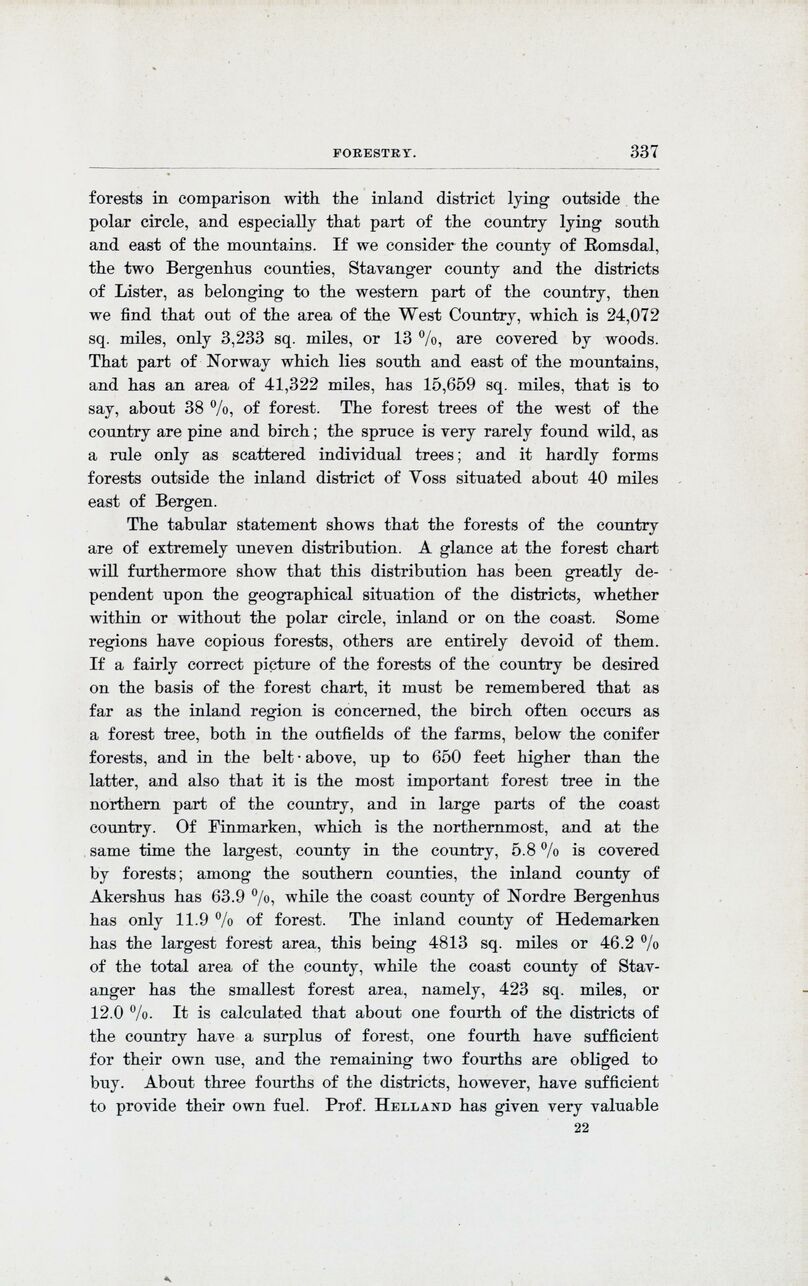
Full resolution (JPEG) - On this page / på denna sida - Forestry, by K. A. Fauchald

<< prev. page << föreg. sida << >> nästa sida >> next page >>
Below is the raw OCR text
from the above scanned image.
Do you see an error? Proofread the page now!
Här nedan syns maskintolkade texten från faksimilbilden ovan.
Ser du något fel? Korrekturläs sidan nu!
This page has been proofread at least once.
(diff)
(history)
Denna sida har korrekturlästs minst en gång.
(skillnad)
(historik)
forests in comparison with the inland district lying outside the
polar circle, and especially that part of the country lying south
and east of the mountains. If we consider the county of Romsdal,
the two Bergenhus counties, Stavanger county and the districts
of Lister, as belonging to the western part of the country, then
we find that out of the area of the West Country, which is 24,072
sq. miles, only 3,233 sq. miles, or 13 %, are covered by woods.
That part of Norway which lies south and east of the mountains,
and has an area of 41,322 miles, has 15,659 sq. miles, that is to
say, about 38 %, of forest. The forest trees of the west of the
country are pine and birch; the spruce is very rarely found wild, as
a rule only as scattered individual trees; and it hardly forms
forests outside the inland district of Voss situated about 40 miles
east of Bergen.
The tabular statement shows that the forests of the country
are of extremely uneven distribution. A glance at the forest chart
will furthermore show that this distribution has been greatly
dependent upon the geographical situation of the districts, whether
within or without the polar circle, inland or on the coast. Some
regions have copious forests, others are entirely devoid of them.
If a fairly correct picture of the forests of the country be desired
on the basis of the forest chart, it must be remembered that as
far as the inland region is concerned, the birch often occurs as
a forest tree, both in the outfields of the farms, below the conifer
forests, and in the belt above, up to 650 feet higher than the
latter, and also that it is the most important forest tree in the
northern part of the country, and in large parts of the coast
country. Of Finmarken, which is the northernmost, and at the
same time the largest, county in the country, 5.8 % is covered
by forests; among the southern counties, the inland county of
Akershus has 63.9 %, while the coast county of Nordre Bergenhus
has only 11.9 % of forest. The inland county of Hedemarken
has the largest forest area, this being 4813 sq. miles or 46.2 %
of the total area of the county, while the coast county of
Stavanger has the smallest forest area, namely, 423 sq. miles, or
12.0 %. It is calculated that about one fourth of the districts of
the country have a surplus of forest, one fourth have sufficient
for their own use, and the remaining two fourths are obliged to
buy. About three fourths of the districts, however, have sufficient
to provide their own fuel. Prof. Helland has given very valuable
<< prev. page << föreg. sida << >> nästa sida >> next page >>